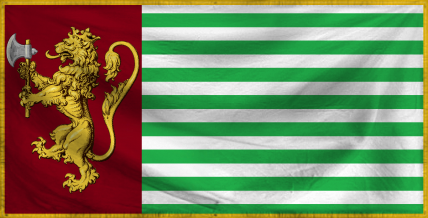The Realm of Cotland
Cotland, officially the Realm of Cotland or just the Realm, is a nation located in Earth II. The Realm occupies a substantial part of northern and eastern Europe, with the heartland located in Scandinavia. Centered in northeastern Europe, the Realm is a large nation with a turbulent history dating back more than one thousand years to the age of Vikings through to the present day. Once a globe-encompassing empire, Cotland has been scaled back to the present-day Realm which control over three million square kilometers of territory.
Table of Contents
- 1. - Government & Politics
- 2. - Administrative Divisions
- 3. - Demographics & Climate
- 4. - Economy
- 5. - Culture
- 6. - Foreign Policy
- 7. - History
- 8. - Military
Quick Facts
- Full Name: Cotlands Rike (The Realm of Cotland)
- Common Name: Cotland
- Official Language: Cottish
- National Capital: Oslo
- Largest City: Petersborg
- Form of Government: Parliamentary Monarchy
- Head of State: King SVERRE II (since February 8, 2010)
- Head of Government: Chancellor Terje HOLE (Moderate Party) (since 31 August 2003)
- Seat of State: Oslo, Norway
- Seat of Government: Oslo, Norway
- Independence: 7 June, 957
- Constitution: 17 May, 1814
- Total Land Area: 3.226.751,99 km²
- Total Water Area: 275.829,08 km²
- Total Area: 3.502.581,07 km²
- Population: 631,241,000 (2012 census)
- Population Density: 195,63 people/km²
- Currency: Rikskrone (CRK)
- Exchange Rate: CRK 1 = $1.8108
- Total GDP: $25.882.148.000.000,00
- GDP per Capita: $41,002.00
- Internet TLD: .cot
- Calling Code: +30

